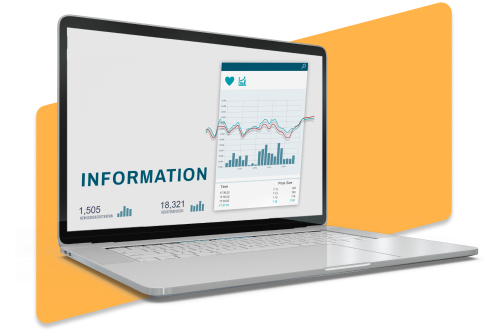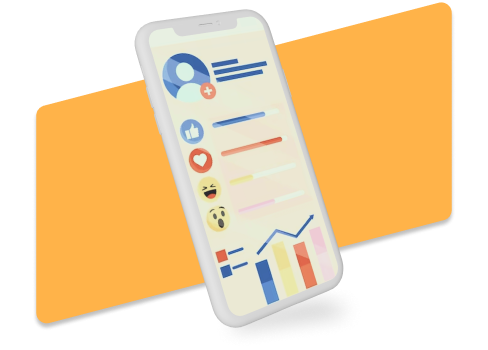External promotion
After completing the painstaking stage of internal promotion, it’s time to tell “everyone on the Internet” about the site. External promotion for search engines contributes to the optimal achievement of the goal. When we optimize the site according to all the requirements of the search engines, the site must be “opened” for ranking. Yes, everything is correct. During the development and optimization of the site, you need to “keep it closed”. Here, too, everything is simple.
The site during development will not have all the information, or that is repeated in some places. During its filling, the content will appear gradually, not all at once. If the robots of search engines, according to their algorithms, begin to analyze the content of the site, they will receive unwanted values. These values can later be replaced by updating and supplementing the content. But it may take several weeks or several months. We suggest not to waste time on replacing and “interrupting” low-quality data but to make the content of the site high-quality and then talk about it.
External promotion and referrals
Positions on the site need to reinforced with external links. Specifically, talk about the benefits of the site for external resources. You can use social networks, forums, discussions and bulletin boards to make your site known to many users on the Internet. You need to regularly develop the site and maintain already-acquired positions. After all, no one starts a business in order to stop or even cease its existence.
By connecting high-quality content on the site with external web resources, we create a system that attracts new customers and retains and works with current ones. You can learn more about the process of external promotion on the page External Promotion of the Site.
The site should not just exist, but work and develop.
SELECTOR.SPACE
Our approach to promoting your website:

- Don’t trust words, trust numbers! Developers can digitize the data on each site, and it is very easy:
- How many times per month was the site shown?
- How many times have users visited the site?
- Which pages are the most important?
- Have there been more shows in the last 3 months?
- Is site traffic increasing with impressions?
- Why do customers go to the site but do not buy or make an application?
- Action first, then payment. We offer to conduct a free site audit, and only then will we conduct a paid internal optimization. If there are no problems with the site, then you need to immediately start its external promotion. As a result of the audit, our customer will receive a list of problem areas and will decide who to entrust with their solution.
- LLC “SELECTOR.SPACE” has officially been on the market for over 5 years. We suggest drawing up a contract and working according to its clauses, weighing all the risks.
- Our company suggests starting to build an SEO strategy even before the site design stage because it has a significant impact on the appearance of a profitable web resource.
We will provide answers to questions and clarifications by phone at a time convenient for you 066 389 02 24 or 096 81 00 132.
Telegram – @selector_space, Viber – 066 389 02 24, WhatsApp – +380 66 389 0224
Or fill out the form on this page.
Follow us on Instagram, Facebook, TikTok and Pinterest. We constantly share useful information about our work and successful cases.
SEO-promotion
Keyword research
Content optimization
Link building
Presence in social media
Keyword research
Keyword research: Identifying a set of keywords and phrases that best match your site and have a high potential to attract traffic
Order promotion

Niche analysis
Detailed research of the niche or industry in which the site operates. Understanding the top topics, popular queries, and competition in your industry will help you understand what keywords potential visitors are using when searching for relevant products or services.
Using keyword research tools
There are many tools like Google Keyword Planner, SEMrush, Moz Keyword Explorer, etc. that help you discover popular keywords and phrases used in a niche. These tools provide information on search volumes, competition levels, and similar keywords to help you understand which keywords are potentially profitable for your site.
Choosing the right keywords
Based on the results of the research, it is necessary to choose a set of keywords and phrases that best suit the site. It is worth choosing those that have a sufficient number of searches, but are not too competitive. Optimizing your site based on these keywords will help you attract targeted traffic and improve your site's ranking in search results.
Use of keywords in site content
After choosing keywords, it is important to include them in the content of the site. This can be on blog pages, product or service descriptions, meta tags, page titles and URLs. Enriching the content of the site with selected keywords will help search engines better understand the subject of the site and display it in search results for relevant user queries.
Using keywords in meta tags
It's also important to include keywords in your site's meta tags, such as title meta tags (title tag) and meta description (meta description). This lets search engines know that the site is relevant to certain keywords and improves its performance in search results.
Keyword placement in URLs
If possible, it is a good idea to include keywords in the URLs of the site pages. This not only improves the clarity and relevance of the URL for users, but also helps search engines index the site better.
Image optimization
Keywords can also be used in image file names, alt texts (alt text) and image captions. This allows you to optimize your site for search engines and improve its visibility in relevant search results.
Analysis and monitoring
After introducing keywords into the site, it is important to analyze and monitor their effectiveness. Analytical tools such as Google Analytics should be used to track traffic, user behavior and conversion rates. This will help you understand which keywords bring more traffic and which need additional optimization.
Competitive analysis
It is important to study the competition and their keyword strategies. It is necessary to research what keywords are used by competitors and how they optimize their pages. This will provide ideas for improving your own keyword strategy and help you discover new opportunities.
Constant optimization
Keywords and their performance can change over time, so it's important to constantly optimize. You should regularly review your keywords, analyze their effectiveness and make appropriate adjustments. This can include replacing less effective keywords with better ones, resolving competitive conflicts, and identifying new keywords that have the potential to bring in more traffic.
Interaction with the community
In addition to researching and using keywords, it is important to interact with a community of users who are interested in this niche. You can join forums, blogs and social networks where you can discuss topics related to this industry. This will allow you to build authority and attract attention to the site, which in turn will positively affect the ranking in search engines.
Content marketing
A content marketing strategy should be developed, including creating interesting and valuable content for the target audience. Use keywords and phrases in content such as articles, blogs, videos, infographics, etc. This will help position yourself as an expert in the field and attract the attention of your target audience.
Link building
Building high-quality external links (backlinks) is another important stage of external promotion of the site. Links from other authoritative and relevant sites can positively affect the site's ranking in search engines. You should carefully choose and build links from sites that have relevant topics and authority. You can use such methods of link building as guest articles, cooperation with influential bloggers, participation in professional forums, social media and directories.
Social media
An active presence in social networks is an important part of external promotion. Brand profiles should be created on popular social networks like Facebook, Twitter, Instagram, LinkedIn, etc. Publish interesting and useful content, use keywords and phrases in descriptions, hashtags and links to the site. This will help attract a new audience, increase brand awareness and generate additional links to the site.
Monitoring and improvement
It is necessary to constantly monitor the results of the external promotion strategy and make the necessary improvements. Analyze analytics data, study changes in search algorithms and rankings, and adapt your promotion methods accordingly. The strategy of external promotion must be flexible and constantly adapt to changes in search engines and the needs of the audience.

Site optimization
Content optimization is one of the key stages of external site promotion. It involves the creation of high-quality content that includes selected keywords and phrases in order to increase the visibility of your site in search engines. The main goal is for search engines to find your content relevant to users' searches and display it in higher positions in search results.
Order promotion
Keywords and phrases
Conducting research on keywords that are relevant to the niche and that users use when searching for information. It is necessary to choose keywords that have high popularity and the potential to attract the target audience.
Headings and subheadings
The use of keywords in content headings and subheadings helps search engines better understand the content of the page and provides greater relevance for relevant search queries.
Optimized text
Writing quality text that includes key words and phrases in a natural and logical context. Overloading keywords should be avoided, as this can have negative consequences, such as degrading the quality of the content or marking the site as spam.
Meta tags
You need to use appropriate meta tags, such as the title meta tag and the description meta tag, to match the content of the page with the search queries of the users. Optimized meta tags can increase the chances of a page ranking in search results. Title meta tag (title tag) is displayed in the upper part of the browser and is a short description of the content of the page. It is necessary to use keywords in the title to accurately convey the topic of the page and attract the attention of users in search results.
URL optimization
Creating short, clear and optimized URLs for site pages. Including keywords in URLs can help search engines better understand the subject matter of your pages and improve their visibility.
Image optimization
Using keywords in image file names, ALT tag descriptions, and specified dimensions for images helps increase your site's visibility in search engines, especially image searches.
Internal link
Creating an internal linking strategy, which includes establishing links between different pages of the site. This helps search engines understand the structure of the site and improves the indexing of the pages.
Content for users
The main goal of content optimization is to create high-quality, interesting and useful content for users. Ensuring compliance with user expectations and providing valuable information contributes to attracting traffic and improving the site's ranking in search engines.
Link building
Link building, also known as link building, is an important stage of external website promotion. It aims to acquire quality external links, that is, links that point to the website from other sources. This process helps increase the site's authority in the eyes of search engines, which usually leads to an improvement in its position in search results.
Order promotion

Identification of potential sources
Identifying other websites, blogs, forums, social media and other online resources that may be interested in linking to the website. These can be related websites, influential bloggers, or web resources that publish information related to a business or industry.
Interaction and making contact
After identifying potential sources, it is important to establish contact with them. This may include writing personalized emails, commenting on blogs, reaching out to content authors or directly to site owners. The main goal is to generate interest from these sources and get the opportunity to get a link to the website. Create quality content
Creating quality content
Well-written and engaging content is a key factor in link building success. It pays to create valuable content that will engage other websites and their audience. This can be unique articles, infographics, videos, research, or other content formats that are interesting and useful to your target audience.
Link to the site
You need to make sure that the website contains quality internal links. This will help other sources easily find and link to interesting and useful content on the site. Additionally, you may offer link exchanges to websites you interact with or ask them to link to your website.
Monitoring and analysis of results
After successfully getting your website links, it is important to track and analyze the results. Use analytics tools to measure the impact of link building on traffic, search engine rankings, and other metrics.
Placement of guest publications
This is an additional way to get quality external links. Guest posting is when you write interesting and informative content for other websites and they post it on their site with a link. This makes it possible to attract a new audience and improve the authority of the site.
Participation in web directories and lists
Submitting your site to web directories and lists is another way to build links. These can be general web directories, specialized site directories, local business directories, etc. It is important to ensure that the site is added to the appropriate categories and has correctly filled data.
Blogging and guest posts
Creating and publishing interesting and informative content on your own blog can attract the attention of other websites that are interested in posting links. Also, you can offer guest posts on other blogs in the industry to get backlinks.
Connecting to social media
Creating an active brand presence on social media platforms (such as Facebook, Twitter, LinkedIn, Instagram, etc.) can bring in quality external links. So you need to publish interesting and viral content that will attract the attention of users and encourage them to link to the site.
Monitoring of competitors
It is necessary to follow the activities of the competition and their links. Identifying the sources they get their links from can provide valuable information for building your own link strategy. Analyze their links and try to get similar or even better links to the website.
Use of press releases
Creating and distributing press releases about new products, services, events or other significant events related to your business can attract the attention of the media and other websites. If your press release gets coverage in the media or other publications, it can lead to links to your site.
Partner programs and cooperation
Partnering with other websites, bloggers or businesses can help you get quality backlinks. It's worth checking out collaboration opportunities, such as joint projects, recommendations, banner posting, or content creation.
Monitoring of competitors
It is necessary to follow the activities of the competition and their links. Identifying the sources they get their links from can provide valuable information for building your own link strategy. Analyze their links and try to get similar or even better links to the website.
Use of press releases
Creating and distributing press releases about new products, services, events or other significant events related to your business can attract the attention of the media and other websites. If your press release gets coverage in the media or other publications, it can lead to links to your site.
Partner programs and cooperation
Partnering with other websites, bloggers or businesses can help you get quality backlinks. It's worth checking out collaboration opportunities, such as joint projects, recommendations, banner posting, or content creation.
Connection to global and local directories
Building internal website links to global and local directories such as Google My Business, Bing Places, Yelp and others can help improve your search engine presence and get links to your site.
Active participation in communities and forums
Joining and actively participating in industry-specific web communities and forums can help establish your expertise and secure links to your site. Regularly contribute valuable contributions to discussions, answer user questions and provide valuable advice. This can attract the attention of other members of the community and lead to links to the website.
Optimizing for local search
If the business has a local presence, it is important to optimize the website for local search. This includes creating local information pages, using locally targeted keywords, registering with local business directories, and getting customers to write positive reviews about the business, which can lead to links to the site or page.
Connecting to famous influencers
If there are well-known influencers in the industry, it is worth trying to establish a connection with them and offer cooperation. This may include co-creating content, interviews, sponsored posts, or participating in their projects. With such collaborations, valuable website links can be obtained, as influencers have significant influence and a large audience.
Monitoring and fixing broken links
You should check links to other websites from time to time. Links may become corrupted or out of date over time due to changing URLs, moving or deleting pages. Tools should be used to check links and fix broken or invalid links. This is important because broken links can negatively affect your site's ranking.
Building internal links
Don't forget the importance of internal links. They help distribute authority between website pages and improve navigation for users. It is worth creating links between different pages, using appropriate keywords and phrases for high-quality internal linking.
Using social bookmarks
Social bookmarking buttons should be added to pages, allowing users to easily share content on social media. When people share articles, blogs or other content, it can lead to external links to the website.
Analysis of results
It is important to constantly monitor and analyze the results of your link building strategy. You can use analytical tools to determine the performance of different link sources, establish key performance indicators and refine your strategy based on the results.

Presence in social media
Presence in social media is an important component of the external promotion of the site. This means an active presence of your company or brand on social media platforms such as Facebook, Twitter, Instagram, LinkedIn, YouTube, etc. The main purpose is to communicate with your audience, get their attention, promote products or services and drive traffic to your site.
Order promotion
Creating a social media strategy
Creating a social media strategy involves developing a concrete action plan and defining goals for your social media presence. This means defining your target audience, choosing the platforms you will be active on, and developing a content strategy that aligns with those goals. Such a strategy determines the direction of activity in social media and serves as the basis for a successful presence and promotion of the brand.
Defining the target audience
Determining the target audience involves identifying the main characteristics and interests of the group of people to whom products or services are directed. This process allows you to better understand the needs and expectations of your target audience, which in turn helps you create content and messages that reach and engage that audience. This is an important component of a successful social media strategy, as it helps you build a connection with your potential customers and provide more personalized and effective communication.
Creating and publishing interesting content
Creating and publishing interesting content is a key stage of external promotion of the site through social media. This includes developing diverse and engaging content such as articles, videos, infographics, photos and other formats that will engage and engage your audience. The main goal is to attract attention, maintain interest and stimulate interaction with the brand or products.
Promotion of products or services
Promotion of products or services through social media is an effective tool to attract the attention of the audience. This includes posting reviews, promotions, news about new product releases or updates, and sharing links to the site. Using social media allows you to reach a wider audience, increase awareness of your products or services, and create a positive brand image.
Interaction with the audience
Social media engagement involves active communication with followers, customers, and fans. This means responding to comments and queries, listening to their thoughts and opinions, and providing detailed answers to their questions. This contributes to building interaction, increasing audience loyalty and creating a positive image of the company.
Analytics and measurement of results
Analytics and measuring results are an important part of outbound social media promotion. It includes the use of special tools and platforms to collect and analyze data about the audience, interaction with content, distribution of links and conversions. This allows you to evaluate the effectiveness of the strategy, identify successful approaches and make the necessary adjustments to achieve the set goals.
Cooperation with communities
Collaboration with communities in social media includes active interaction with groups and communities that share common interests with the company. This may include sharing content, sharing experiences and recommendations, joint promotions and contests that promote brand awareness among audiences interested in similar products or services. Cooperation with communities allows you to build partnerships and expand your audience on social media.
Monitoring of competitors
Social Media Competitor Monitoring involves the constant monitoring of competitor activity on social media platforms. This means studying their posts, interacting with their audience, using different content strategies and promotion campaigns. By analyzing competitors' strategies, you can get ideas for improving your strategy, identify competitive advantages, and understand how to effectively use social media to achieve your goals.




